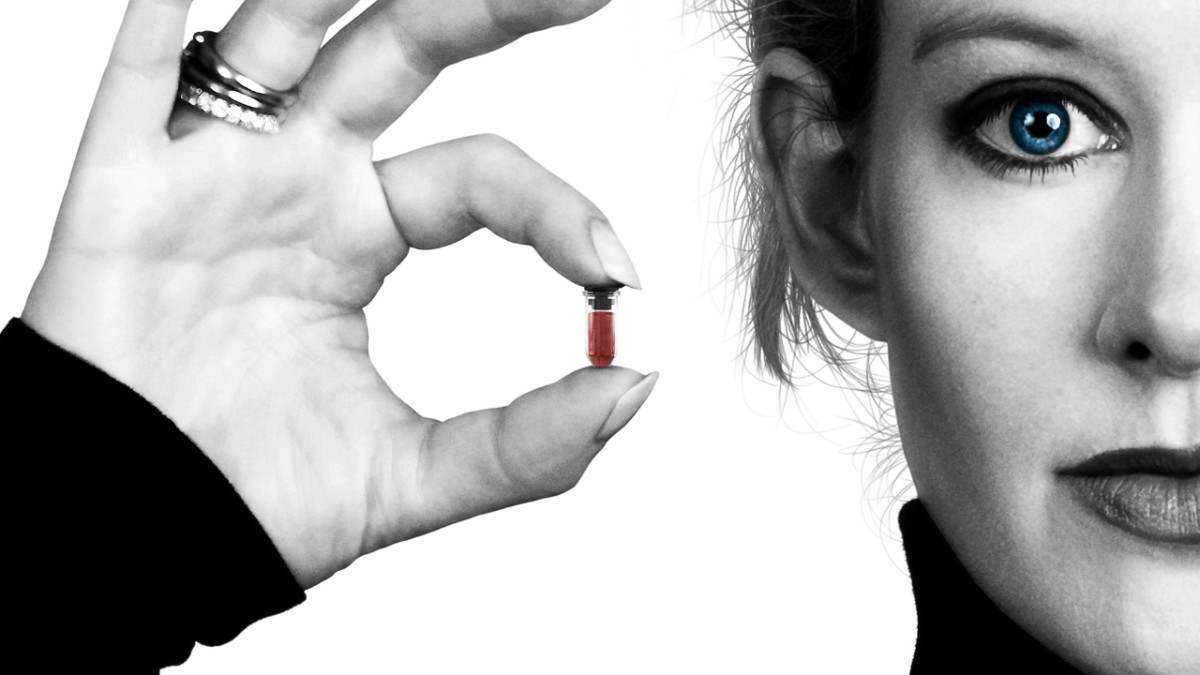Alex Gibney’s new documentary has been something I’ve been looking forward to watching for some time, since he takes on the story of Elizabeth Holmes and Theranos.
Now, he has a tough act to follow, because John Carreyrou of the the Wall St Journal’s book, Bad Blood, is the definitive telling of the story, coming from the reporter who essentially got the scoop about Theranos’ deceptions.
The story is complex, and there are many layers to it. Necessarily, Gibney can only touch on a few of those issues in his new documentary feature. He plays heavily on the “Edison” motif – after Thomas Edison, the renowned inventor of so many devices from the late 19th and early 20th centuries.
There are a number of critical inteviews that Gibney uses to explain what was going on, including with one with Fortune’s Roger Parloff, the writer who first put Holmes on his magazine’s cover. Parloff is a man who looks as though he’s still coming to terms with the deception that was done to him.
There is also an interview with Ken Auletta of the New Yorker, who also wrote a key piece that helped create the Elizabeth Holmes mythology. Auletta’s piece does include the following paragraph, which is referred to more than once in the documentary:
What exactly happens in the machines is treated as a state secret, and Holmes’s description of the process was comically vague: “A chemistry is performed so that a chemical reaction occurs and generates a signal from the chemical interaction with the sample, which is translated into a result, which is then reviewed by certified laboratory personnel.” [My emphasis]
But creating a mythology is something that Holmes was set on doing, and Gibney’s film shows us at one point how she repeatedly used the same story with multiple interviewers as part of her origin story.
The documentary also features interviews with ex-employees – notably Tyler Schultz, the grandson of former US Secretary of State George Schultz, a man who had become one of the directors of Theranos. Tyler had to take on his own grandfather in trying to reveal to him what was actually happening in the company’s labs.
The documentary didn’t really address just how litigious Theranos became, and it only really used a limited number of former employees. Carreyrou’s book does a much better job at showing the lengths that they went to in order to scare former employees from saying anything.
My biggest problem with documentary was their labelling – or rather lack of labelling – source material. This is really important and a failure on the part of the makers.
The documentary opens and closes with Elizabeth Holmes speaking directly to camera, and it’s not at all clear whether she has for some reason granted an interview to Gibney and his team.
In fact, reading between the lines, it seems as though Gibney has got hold of all the material shot by the creative agency who at a certain point was hired to make commercials and other marketing material for Theranos. And much of this was shot by another documentarian – Errol Morris.
There is also a wide range of behind the scenes footage of a company meeting and Holmes wandering around her building. This all seems to have come from the same shoot and will have been shot at roughly the same time. Yet we never really are told this, and at a bare minimum, I’d have liked to have seen some kind of on-screen caption giving a date and the provenance of footage.
Likewise, there’s a brief on camera interview with David Boies, a fierce lawyer who for a period was used by Theranos to chase former employees the company believed were sources for Carreyrou at the Wall St Journal. But the source of that interview and the timing of it isn’t made clear. Boies was still defending Theranos in it, yet that doesn’t feel to be likely to be case in 2019.
Fundamentally, the documentary returns more than once to the “fake it until you make it” ethos of Silicon Valley. For many platforms, that doesn’t really matter – you might tread on other people’s copyright or have unsustainable business models, but nobody is going to die because you got it wrong. As we move into a world where that same kind of start-up mentality affects things that have real safety issues, that kind of thinking has to change. The documentary notes self-driving cars as another intersection of Silicon Valley with a largely safety-conscious existing industry.
In conclusion, I would say that the film is worth watching, but it doesn’t really get to the bottom of the story, and the lack of sourcing of footage is problematic.
However, you should definitely read Carreyrou’s book, Bad Blood, which has just been released in paperback in the UK.
Note: I haven’t yet seen Rebecca Jarvis’ ABC documentary, The Dropout, as it’s geo-blocked in the UK (and my VPN wouldn’t get around that), but I have listened to her accompanying podcast of the same name. The podcast format works well for this story, because there’s so much to it that the time spent.


Comments
One response to “The Inventor: Out for Blood in Silicon Valley”
“A chemistry is performed so that a chemical reaction occurs…” Er, ok?